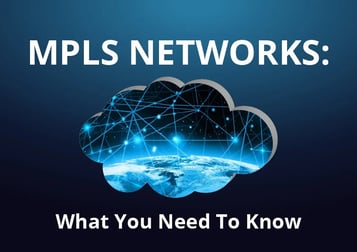MPLS Services
Multiprotocol Label Switching
Multiprotocol Label Switching (MPLS) is a protocol-agnostic networking technology used to efficiently direct data packets across a network. It operates at the data link layer (Layer 2) and network layer (Layer 3) of the OSI model, allowing it to integrate seamlessly with various networking technologies and protocols.
MPLS works by adding a label (or "tag") to each data packet as it enters the network. These labels are used by routers and switches within the network to make forwarding decisions based on predefined paths called Label Switched Paths (LSPs). Instead of examining the packet's IP header at each hop, routers and switches can quickly route packets based on the MPLS label, resulting in faster and more efficient packet forwarding.
Key features and benefits of MPLS include:
Traffic engineering: MPLS enables network administrators to define and control traffic paths through the network, allowing for more efficient use of network resources and improved performance.
Quality of Service (QoS): MPLS supports QoS mechanisms that prioritize certain types of traffic (such as voice or video) over others, ensuring consistent performance for critical applications.
Virtual Private Networks (VPNs): MPLS can be used to create secure, private networks over a shared infrastructure, providing secure connectivity between multiple locations or business partners.
Scalability: MPLS networks are highly scalable and can support thousands of endpoints, making them suitable for large-scale enterprise networks.
Traffic segmentation: MPLS allows for the segmentation of network traffic into separate forwarding domains, providing isolation and improved security between different parts of the network.
Overall, MPLS is widely used by enterprises and service providers to create reliable, high-performance networks that can support a variety of applications and services. However, its popularity has somewhat waned with the rise of alternative technologies such as SD-WAN, which offer similar functionality with additional benefits such as increased flexibility and cost savings




